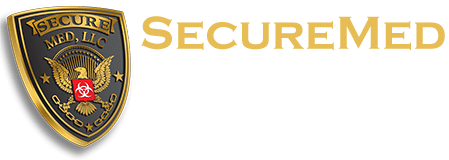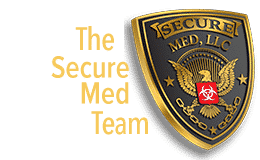
Have you ever watched shows like “How It’s Made” on the Discovery Science channel? It’s definitely not the most entertaining show out there, but the premise is that it’s a look behind the scenes at how everyday things are manufactured. A typical episode will feature three or four products, ranging from totally common (like jeans or tin foil) to much less common (such as Braille typewriters or pinball machines). While this type of show may not strike your fancy, the concept is pretty ingenious – not many of us know how the things we use everyday are created or fashioned, or how the process of making a specific item came to be. It’s a detailed look into the background of items you use on a daily basis.
Now, if you relate that concept to working in any part of the medical field, you may find yourself in a similar position – you know the tools you work with everyday, and you even know (hopefully) how to dispose of them properly. But do you know what happens to those items after you put them in the proper disposal container? Do you know how many ways medical waste can and should be destroyed? It may not be high up on your priority list of things to know, but if you have any part in the proper disposal of Regulated Medical Waste (RMW), you better have some facts on the process of disposal and on the regulations and laws that surround it.
Behind the Scenes
When you throw something away, like a piece of litter, into a garbage can, you understand that that can is emptied into a larger receptacle, and a garbage truck collects that garbage and brings it to a landfill. That seems pretty simple and to the point. But when we’re talking about medical waste, and specifically about RMW, there are more intricate steps to the process. Workers in the healthcare field are surprised to find out that almost 85% of the waste they generate can be classified as solid waste, which can be disposed of in a regular trash can. The other 15% is classified as either biohazardous, hazardous or other regulated waste, which needs to be handled, contained and disposed of per state and federal regulations. Every medical facility is required to abide by certain laws for having and housing medical waste, and in turn, is required to make sure that when the waste leaves their facility, that it’s handled properly and destroyed in the right way. If you’re working with a professional medical waste service company (and you should be), it’s easy to feel as if your part is done when they come to collect the waste your facility has generated, but it can’t end there. You need to know where are how that medical waste is being disposed. This is also known as “cradle to grave” liability – you are liable for that waste from start to finish.
Before you can know which type of destruction is necessary for the medical waste from your facility, you need to know which type of RMW (also known as infectious waste or biomedical waste) you’re dealing with. Each type is typically handled using a different method.
- Pathological waste
- Trace chemotherapy waste
- Human blood products
- Microbiological waste
- Sharps
For each type of waste, there’s a different way to destroy it. Any trusted medical waste disposal service provider will take what your facility generates and will either dispose of it on-site or off-site, or will legally handle it with another destruction service company. Here are the options out there for proper disposal:
Autoclaving: Steam sterilization actually causes RMW to be non-infectious. After it’s been sterilized, the waste can be disposed of in solid waste landfills, or it can be incinerated under less severe regulations.
Chemical: Some kinds of RMW can be treated by applying reactive chemicals to it, but this is generally reserved for waste that is already chemical in nature.
Incineration: Before 1997, over 90% of all RMW was disposed of via incineration. Changes to EPA regulations have caused providers to seek other disposal options, but incineration is still the only method used on pathological waste (i.e. body parts and recognizable tissue).
Microwaving: Another way to make RMW non-hazardous is to microwave it with high-powered equipment. Similar to autoclaving, this treatment allows the waste to be disposed of in normal landfills or incineration.
Biological: This experimental method of treating RMW uses enzymes to neutralize hazardous, infectious organisms. Currently, this method is still under development and is rarely used.

Leave it to the Professionals
If you’re trying to find a trusted partner for fully compliant medical waste disposal, you need to be sure to find a company that can handle all that you have and more. If your facility is located in the greater Birmingham or Huntsville areas, contact us at SecureMed. We can give you the ultimate peace of mind by ensuring that all of your medical waste is handled properly and efficiently. Whether it’s sharps disposal, obtaining the right containers for housing the waste generated or even assisting you with secure shredding services, we can be the right partner for your facility. Give us a call today!






